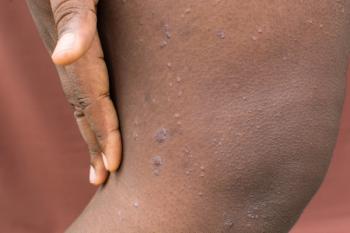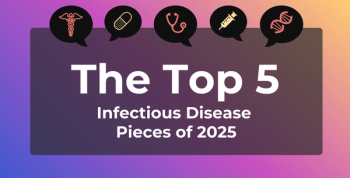
Commentary Shares Insights About Irradiated Blood to Prevent TA-GVHD
A new commentary outlines UK guidance about evidence regarding the appropriateness of blood component irradiation for preventing transfusion-associated graft-versus-host disease (TA-GVHD).
Transfusion-associated graft-versus-host disease (TA-GVHD)
As a result, irradiation of blood components—using gamma- or X-rays—has been touted as a viable way to prevent proliferation of transfused lymphocytes in the transfusion recipient by inactivating lymphocytes through cross-linking DNA. In a new commentary appearing in the
When it comes to TA-GVHD, the thought is that transfused lymphocytes not eliminated by the recipient’s immune system then proliferate and attack organs, which are recognized as foreign. This largely can be explained by 3 factors, according to the authors: the lymphocyte load in the product, immune competence, and shared human leucocyte antigen type between the recipient and donor.
“From the preventative standpoint, irradiation of cellular blood components has emerged as the most effective means to inactivate residual T lymphocytes within cellular blood components, thereby halting their engraftment in transfusion recipients,” explained the authors.
However, the method has an impact on the quality of red cell concentrates, limiting the shelf life of some irradiated units, and there are also potential for deleterious side effects. As a result, irradiation may not always be practical nor feasible for the entirety of a blood bank’s inventory, and several questions remain:
- When should blood banks irradiate products according to available evidence or best clinical practice?
- Which products qualify for irradiation?
- Which patient populations need products to be irradiated?
Many of these questions, according to the authors of the commentary, can be answered by irradiation guidance recently issued by the British Committee for Standards in Haematology Blood Transfusion Task Force, which offers the most recent evidence on whether, and when, blood component irradiation is appropriate.
“The importance and scope of this document cannot be overstated, as it is the leading and most comprehensive guideline available to the international blood bank, transfusion, haematology/oncology, and transplantation communities on the indications as well as perils/pitfalls for cellular blood component irradiation,” explained the authors.
Some of these updates include:
- An emphasis on the age of stored components, leucodepletion (LD) status, and risk of TA-GVHD
- Risks appear highest with fresh (ie, <14-day-old units) non-LD units
- Older units have undergone LD may be reasonable to use in urgent situations when there’s no time to irradiate
- Removal of recommendations for irradiation of “top up” and other routine transfusions to neonates, particularly if units used for transfusion have undergone LD
- Recommendations for irradiation persist for intrauterine transfusion and larger volume neonatal exchange therapies
- Addition of a new recommendation to irradiate cellular blood components for patients with suspected congenital haemophagocytic lymphohistiocytosis syndromes associated with lymphopenia, until T-cell immunodeficiency has been excluded
- T-cell enumeration of mature and naïve Y-lymphoid elements is not recommended as a potentially useful marker for irradiation decisions I medical and/or surgical settings
- Addition of a new recommendation to irradiate blood components for patients undergoing CAR-T therapy
- Patients undergoing CAR-T therapies should essentially be treated as for those undergoing autologous stem cell transplantation
However, the authors of the commentary note that there are remaining challenges the transfusion and hematology communities face in regard to TA-GVHD, including obtaining more rigorous data on the safety profile of new, highly potent immunosuppressive agents, evaluating the safety profile of non-irradiated cellular blood components as a function of the human leukocyte antigen similarity within the donor community, and assessing the required duration of irradiation modifications to transfusion.
Reference
Loingsigh S, Flegel W, Hendrickson J, Tormey C. Preventing transfusion-associated graft-versus-host disease with blood component irradiation: Indispensable guidance for a deadly disorder. Br J Haematol. Published online August 1, 2020. 10.1111/bjh.17016.
Newsletter
Stay ahead of policy, cost, and value—subscribe to AJMC for expert insights at the intersection of clinical care and health economics.







































